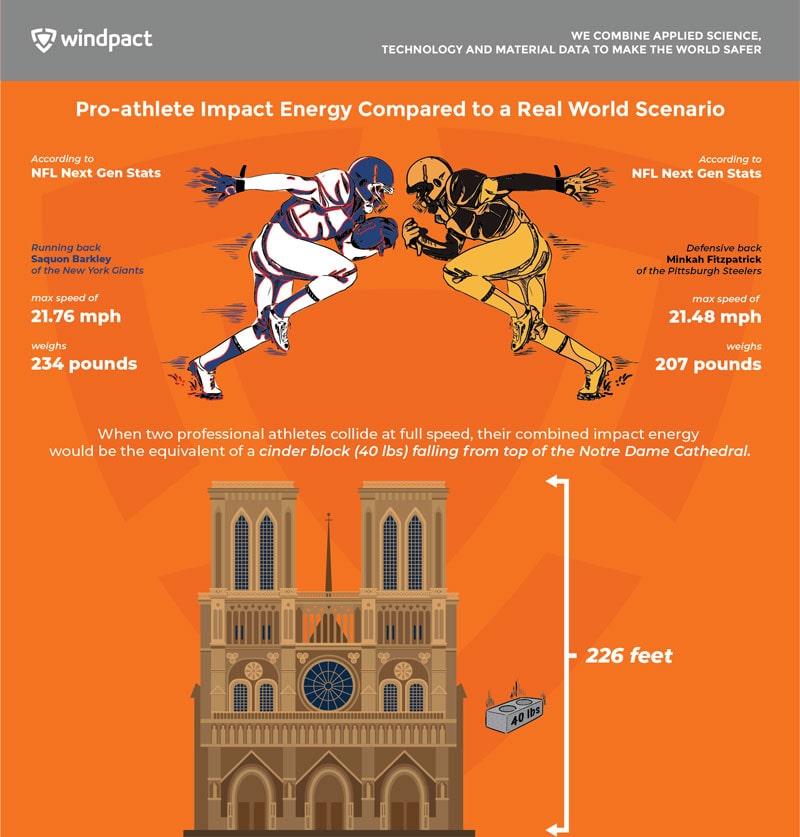Sports-related head injuries
Injuries are an inevitable part of athletics. They can be as simple as a sprained wrist, or as complicated as a head impact that can lead to mild traumatic brain injuries (TBI) such as concussions. At some point during practice or play, players will collide with each other, athletes will fall to the ground, contact will occur. Given the inherent risk and potential for serious injury, one of the most important responsibilities of the sports industry is to help athletes be well protected, prepared, and informed.
Concussions in sports – An Illustration
Below is an infographic showing what professional athletes experience during a collision with another player. Head injuries are dangerous no matter what, but when it comes to the dangers of impacts in sports, it’s impossible to overstate the effect it can have on an athlete’s health.

Take two professional-level football players. In this example, we have New York Giants running back Saquon Barkley, who weighs 234 lbs, running at 21.76 mph towards Pittsburgh Steelers defensive back Minkah Fitzpatrick who weighs 207 lbs and is running at 21.48 mph.
When these two athletes collide, their combined impact energy is nearly identical to a 40 lbs cinder block falling from the top of Notre Dame in Paris (226 ft in the air). This is due to how energy is calculated in terms of mass and velocity; no matter who or what is colliding, if the factors underlying the resulting energy transference are similar, then the forces at play in both scenarios are mathematically comparable.
Not all of us are pro-level athletes who can perform at that level. But no matter the sport, and no matter the level at which we play, reducing the potential risk of problems from repeated head impacts is in everyone’s interest.
Mitigating Head Trauma in Professional Sports
All contact sports face the challenge of mitigating the effects of impact energy in the body. For example, a study showed that soccer players who suffered even minor head and neck injuries developed severe physical and cognitive deficits after their careers ended, observable on neuropsychological assays of brain function. In baseball and softball studies of the incidences of mTBIs often find that a sizeable sample of players is injured frequently in both practices and games despite wearing protective gear.
These incidents and studies highlight a critical point: the impact energy transferred between players in sports is formidable.
Mitigating the risks of concussions in sports is a tremendous challenge. No helmet can completely prevent a head injury. But it is encouraging to know that the greatest leagues, promoters, researchers, sponsors, the media, professional teams, and everyone involved in the sports industry are actively working to make our favorite sports safer.
Windpact is dedicated to educating and enabling the sports industry with technology and research to make sports safer.
